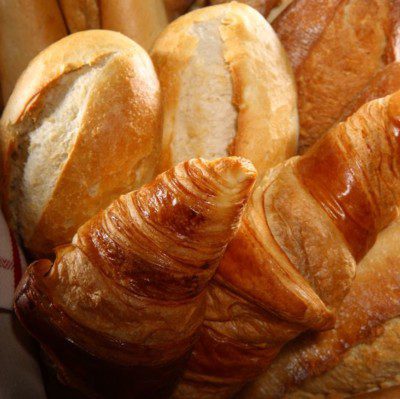How it works
Maillard reactions were observed for the first time by the French chemist Louis-Carnille Maillard, in 1913. These reactions occur between reducing sugars, mainly glucose, and a primary amino group (a free amino acid or an amino group on side chain of a protein molecule).
Biological compounds that participate in Maillard reactions are:1
- Monosaccharides: pentoses and hexoses (xylose, ribose, arabinose, glucose, galactose and fructose).
- Disaccharides: lactose and maltose.
- Amino acids: lysine, arginine, histidine and tryptophan.
Transformations caused by Maillard reactions include generation of melanoidins (light yellow to dark brown) while simultaneously, flavor and aroma compounds are also generated. Under extreme reaction conditions, mutagenic or potentially carcinogenic compounds, such as acrylamide may form.1
Three primary stages are critical for the Maillard reaction:1
- Initial condensation of a carbohydrate carbonyl group with an amine, followed by a series of reactions leading to formation of the Amadori product.
- Rearrangement, dehydration, decomposition, and/or reaction of Amadori intermediates to form furfural compounds, reductones and degradation products.
- Reaction of Maillard intermediary products to form heterocyclic flavor compounds and
red/brown to black colored, melanoidin pigments of high molecular weight.
Nutrition
Maillard reactions can produce undesirable compounds such as acrylamide and furfurals which are suspected to have negative health concerns.
Application
Relevant considerations and factors that affect Maillard reactions in bakery products:1,3
pH: Maillard reactions occur under alkaline conditions. Optimal browning takes place at pH 6–8.
Temperature and time: Temperature (frying and baking) and time of exposure can determine the rate and extent of NEB reactions. Typical reaction temperature range is 150-160oC; browning can still occur at lower temperatures, although at a slower rate.
Sugar and protein content: The rate and extent of browning vary with the type and amount of sugars in formula. Liquid sweeteners such as HFCS, invert syrup, honey or 42 dextrose equivalent (DE) corn syrup, for example, are rich in reducing sugars, and thus can enhance Maillard reactions.
The higher the DE of liquid sweeteners (the higher the amount of simple reducing sugars), the higher the extent of Maillard reactions (more intense brown color). Baked goods formulated with milk solids develop darker crust color due to added lactose and amino acids in milk. Similar effects occur with vital wheat gluten.
Sugar alcohols or polyols (xylitol,sorbitol, mannitol and isomalt) are not reducing sugars and cannot contribute to NEB and result in lighter colored crust.
Presence of free water in the system: Higher water activity (aw) enhances molecular mobility of sugar and amino acid solutes in the dough, thus increases NEB. While maximum activity is obtained at aw of 0.60–0.80; at aw of 0.95 or higher, Maillard reactions tend to slow down.
Fermentation: Amount of yeast, its activity, length of fermentation time and type of dough system, all are detrimental to the rate and extent of browning reactions. As sugars are consumed by yeast and bacteria, less substrates are available for NEB.
Enzymatic activity from hydrolases: Activity from amylases and exo-proteases can also affect NEB. The higher the enzymatic activity the higher the amount of free sugars and amino acids that can participate in Maillard reactions.
FDA regulations
The FDA has not enforced any legal regulations for the level of acrylamide produced in cereal products. Nevertheless, it has provided a guidance on approaches to reduce acrylamide production and continues to urge producers to reduce the levels of acrylamide in their products.
References
- Huber, K.C., and BeMiller, J.N. “Carbohydrates.” Fennema’s Food Chemistry, 5th edition, CRC Press, Taylor & Francis Group, LLC, 2017, pp. 92–165.
- Manley, D. “Sugars and Syrups as Biscuit Ingredients.” Manley’s Technology of Biscuits, Crackers and Cookies, 4th edition, Woodhead Publishing Limited, 2011, pp. 143–180.
- Rufián-Henares, J.A., and Pastoriza, S. “Maillard Reaction.” Encyclopedia of Food and Health, Volume 3, Academic Press, Elsevier Ltd., 2016, pp. 593–600.

